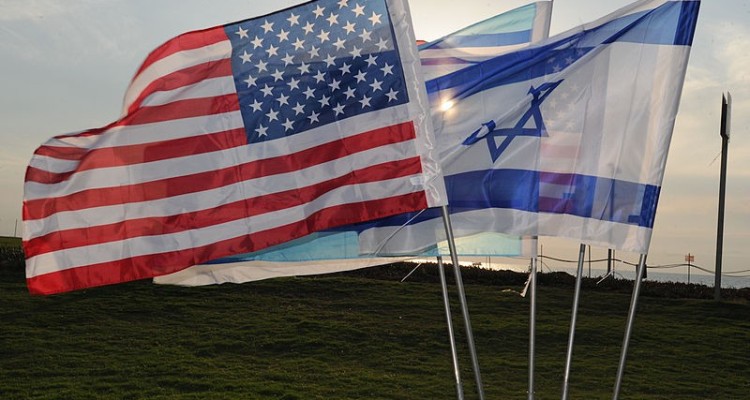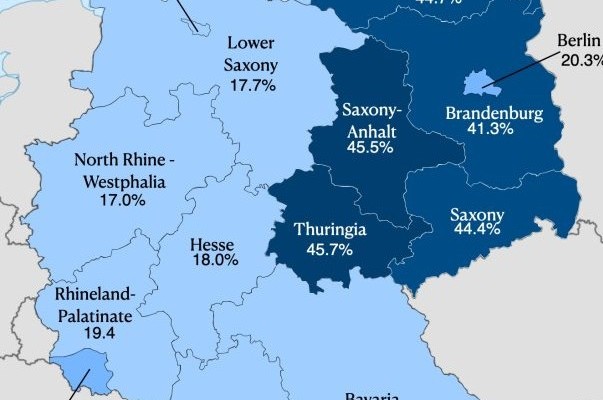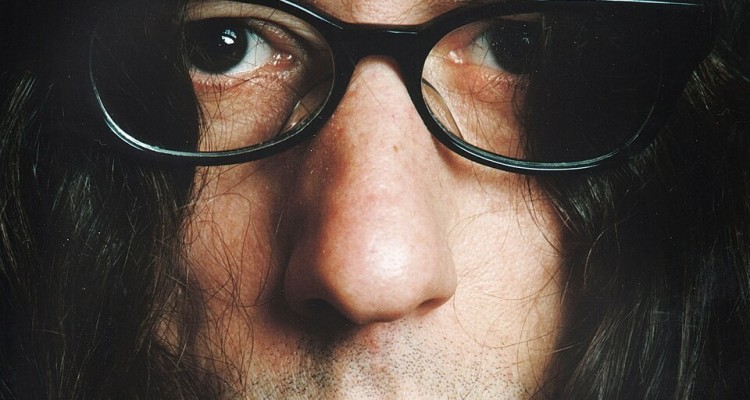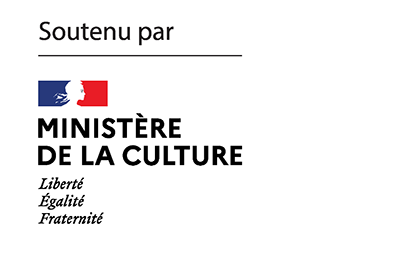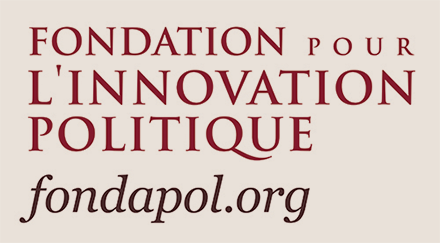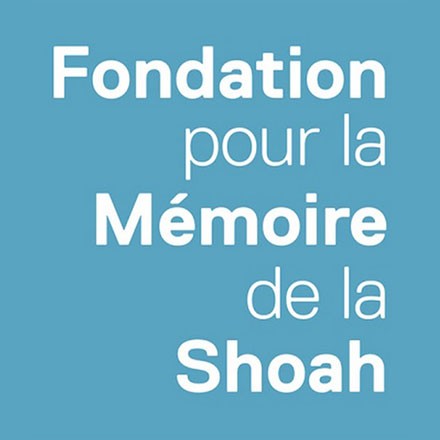On February 26, a riot broke out on the campus of the University of California, Berkeley, on the occasion of the visit of an Israeli lecturer. Daniel Solomon, a doctoral student in history and K.‘s first English translator , gives us an insider’s account of the event and the threatening climate in which it took place. As the rise of antisemitism calls into question American exceptionalism, Solomon examines the loss of illusions, and the sense of loneliness that accompanies it.

When I arrived at the offices of K. for the first time, I had a conversation with editor-in-chief Stéphane Boy that embedded in my consciousness. I was then an ebullient Jew from the United States, running on the fumes of the American century. I could not entirely relate to the experiences of French Jews, despite being a historian of French Jewry. French Jews, I charged, had headed down a blind alley after World War II, abandoning the Franco-Jewish assimilationist ethos for a more assertive form of identification. I detested French Jews’ ardent Zionism; France, much in the same manner as the nineteenth century grandees of the Consistory, was my Zion. French Jews had alienated themselves from the rest of the population in insisting on the right to difference. French Jewry’s fervent defense of Israel had contributed to antisemitism, leading the public and our enemies to conflate Jews writ large and the Jewish state. French Jews had been the authors of their own misfortune; a return to israelitisme pointed the way to salvation. I was then a child, and I spoke as one. Stephane responded to me with the patience of the paterfamilias. “The order of events is here entirely wrong,” he retorted. “We did not desert France; France deserted us.” He recounted his experience at a vigil after the two-thousand-six murder of Ilan Halimi, a Jew from the Paris suburbs. “The protest was entirely made up of Jews. When antisemitism came from the right, the entire public descended into the street with us. We were now on our own.”
In America, we, too, are now on our own.
Alone in the face of the mob, abandoned by the administration
Before the riot broke out at UC-Berkeley last month, Graduate Students for Justice in Palestine promised a reprise of the Hamas pogrom. In a reference to “Al Aqsa Flood,” the Hamas codename for its rampage in southern Israel on 7 October, activists hung a sign from the campus’ main entrance reading “Flood Sather Gate.” On that night, the group’s undergraduate fellow travelers, Bears for Palestine, made good on that vow, disrupting a pro-Israel event in a protest that degenerated into a riot. The mob smashed windows, shouted antisemitic chants, and sent at least one student to urgent care. The attendees, this author included, had to be evacuated via an underground tunnel. As we scurried through the theater’s bowels, a friend jested: “We are just like Yahya Sinwar!”
We had forfeited our right to security after coming to hear a lecture from Ran Bar-Yoshafat, a reserve combat officer in the Israel Defense Forces and habitué of the lecture circuit. The university had assured the campus Jewish organizations behind the event that police officers would fend off disruptive protest and uphold our First Amendment rights. The administration did little to protect the safety of the speaker and audience, and even less to protect their free speech rights. Parading through the campus in a fashion worthy of a militia, the pro-Palestinian rioters exulted in their victory.
Last month’s events have captured headlines throughout the United States, but we did not arrive at this point overnight: the antisemitic riot caps months of harassment, terror apologia, and occasional outbursts of violence from the campus Free Palestine movement. The university’s response to the riot and preceding incidents–a master class in administrative cowardice and duplicitousness–stands as a bad omen for the future of American Jewry.
SJP’s antisemitic onslaught began on the same day as the Hamas pogrom back in October. On that day, Bears for Palestine released a statement praising its “comrades in blood and arms” for their operations “in the so-called ‘Gaza envelope.’” The same organization then mounted demonstrations at which participants clamored to “globalize the intifada” and “free Palestine from the river to the sea.” The protesters intimidated the sparse cortege of Jewish counter-demonstrators, wearing masks and Palestinian headscarves; the demonstrations sometimes spilled over into minor altercations, such as when an SJP member attempted to rip an Israeli flag from someone’s hands. The demonstrations occurred on the university’s main plaza, right next to the academic building where in the fall I was teaching a freshman seminar on Holocaust memory. I was so concerned for my students’ safety that I moved our meetings to the campus Hillel.
We did not arrive at this point overnight: the antisemitic riot caps months of harassment, terror apologia, and occasional outbursts of violence from the campus Free Palestine movement.
The university’s response to these events was tepid and laden with false equivalencies. UC Berkeley Chancellor Carol Christ acknowledged in early November that “fear is being generated by the rhetoric used at some of the recent protests on campus” — a turn of phrase that was telling in its use of the passive voice and refusal to name names. She mentioned worries about antisemitism, but her both sides-ism included a condemnation of the “harassment, threats and doxxing that have targeted our Palestinian students and their supporters.” She even noted that one ought not to equate pro-Palestinian campus protests with support for terrorism (which seems at odds with the declarations of these self-same protesters). Christ closed her statement with a lofty call to honor the institution’s “long-lived and unwavering” dedication to free speech.
At UC Berkeley, this supposedly principled stand on the First Amendment has included allowing pro-Palestinian groups to block campus entrances for hours at a time, for weeks on end, as disabled students (including me as someone who is legally blind) have been forced to walk around the illicit cordon through dirt and puddles.
Pro-Palestinian activists often lament a supposed “Palestine exception” when it comes to respect for the First Amendment. But on Berkeley’s campus last month, the “Israel exception” was in full view. Bears for Palestine called on students to shut down the event with Bar-Yoshafat, plastering his photo on social media, describing him as a “genocidal murderer” and as “dangerous.” In an unnerving threat to others on campus, Bears for Palestine exclaimed: “Genocidal murderers out of Berkeley.”
The event was almost impossible to locate; the venue had been changed at the last minute to try to avoid clashes. When I arrived there, a few anxious undergraduates were checking IDs at the door. A scanty police cordon was also present at the entrance. Ultimately, only about two dozen attendees were able to enter the building prior to the disturbances. Before the event could begin at 6:30 p.m., the “Free Palestine” mob smashed the glass at the entrance, pried open a door to let more confederates enter and then broke into the auditorium. The police, no doubt hindered by the university’s restrictive rules of engagement, attempted only briefly to block the rioters’ way. I saw one of the trespassers refuse to remove her mask and provide an ID when a police officer ordered her to do so. She instead pulled out her phone, began filming, and alleged that the officer was “in my face.” No one was arrested that night.
The police capitulated to the mob in a grand total of five minutes. Scanner recordings since released have shown the department head telling them not to use their riot gear and that the event was being canceled. A dean arrived to escort us out via a subterranean tunnel; I accompanied a former student of mine outside as she broke down in tears. I was not aware of this at the time, but we soon learned that several students had been assaulted and one had been spat on and called “a dirty Jew.”
The administration could only bring itself to use the term antisemitism a week after the riot.
The mob savored its win in a triumphal march through the campus and a series of online posts. The university dispatched this email to the entire campus: “The event is canceled; when exercising your right to free speech, please take care of yourself and others.” The message could not have been clearer: Intimidation and the specter of mob violence carry the day at this institution. In one evening, the university contradicted four months of official rhetoric.
The administration has recouped no credibility since the riot. Christ’s initial response was again penned in High Modern Bureaucrat, eschewing any mention of antisemitism as a motive and failing to identify Bears for Palestine as the culprit. Featuring the vague subject-line “Upholding Our Values,” Christ lamented that “a speaker from Israel” had been prevented from delivering his lecture. In comments to Jewish Insider, university spokesman Dan Mogulof explained this choice arose from a desire to “universalize” the riot. He also equivocated on whether the mob had been antisemitic, musing that while the incident had been “informed by antisemitism … that’s different than saying that everybody there was motivated by that or engaged in that.” The university was not similarly reserved after the death of George Floyd, immediately expressing its “steadfast solidarity with our Black community” and bemoaning the episode as “a racist killing.”
The administration could only bring itself to use the term antisemitism a week after the riot. In a message sent on the next Monday, the chancellor condemned “the antisemitic expression” at the riot and declared that what occurred was “not peaceful civil disobedience.” Christ announced that the university had launched a criminal investigation (federal authorities have now begun their own inquiry) into the protest. But on the same day, she backtracked in a second communication, hinting that the demonstration was not entirely irredeemable. “People should also keep in mind that the actions of a few within a movement or protest do not represent the perspectives or values of an entire community. Civil disobedience can coexist within an event even when some or a minority go too far.” Christ’s partial recantation did not mollify the organizers of “the civil disobedience.” Bears for Palestine depicted itself at the victim of “deeply systemic anti-Palestinian racism”; Graduate Students for Palestine screeched that the university’s actions proved “Zionist comfort” took precedence over “Palestinian death.”
The administration soon added weaselly actions to weasel words. Despite promises to the contrary, BFP and GSJP were allowed to proceed with their events for “Apartheid Week,” SJP’s annual carnival of enmity against the Jewish state. The organizations blocked most of the campus’ main entrance with banners, ropes, and emergency tape. UC-Berkeley Jews were forced to run this gauntlet, which came complete with speakers blaring the sounds of drones and an artificial intelligence-generated voice of an ‘Israeli’ boasting about dropping bombs on Gaza. Mask-clad activists harassed Jewish students who approach the barrier, shoving phone cameras in their faces and obstructing their view with keffiyehs. Rather than remove the installation, campus police were posted there to protect it.
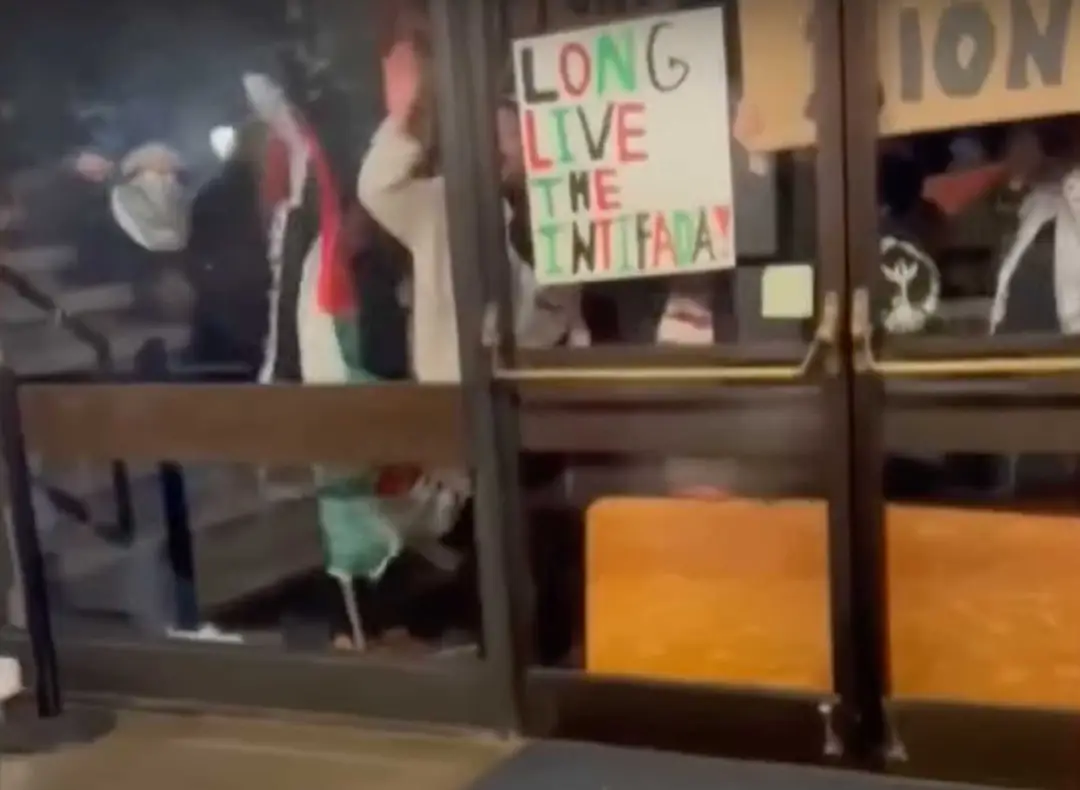
An antisemitism that is embedded in academic teachings
The discontents of the university have reverberated into most corners of the campus, including mine, the History Department in which I am a PhD student. History has been a microcosm of a larger institutional failure, in which ‘equity’ and ‘anti-colonialism’ act as shields for rank antisemitism. The administrative response there has been equally lackluster.
If graduate school has any function, it is as preserve of a serious clash of ideas, particularly at a prestigious institution, such as UC-Berkeley. But here, too, “anti-colonialism” and “equity” do not serve as a basis for further inquiry, but as an excuse for a charmed ignorance. The new vogue in academia is to dismiss the Jewish state as a settler-colonial extrusion of Europe; Israel must be execrated in the same breath as French Algeria or Rhodesia. Having done so, the need to understand the peculiar history of the Jews, the catastrophe of the Holocaust and the ensuing refugee crisis, and the mosaic of contemporary Jewish society in Israel evaporates. The far-left has even decried the use of the term “complexity” as a smoke-screen for the Jewish state’s misdeeds. The allure of what Harold Bloom labeled ‘the school of resentment’ resides in this ability to transform ignorance into virtue. Here in the UC-Berkeley History Department, the school of resentment’s chapter president is Ussama Makdisi, leading a veritable coterie of PhD students in his train. He wrote his first books on the nineteenth-century Ottoman Empire, but has since returned to his true passion: bashing Jews. Even before the Hamas pogrom, his X feed teemed with denunciations of the “depravity” of “liberal academics” who support the Jewish state. He also told a lecture hall full of students that Jews should have founded their state in post-war Germany. The university press office rewarded him for this in an article in which he was praised for “using a unique lens to teach students about contemporary Palestinian history” and “putting the people first.”
Since the Hamas pogrom, the X verbiage has become ever-more florid: he has accused Israel of “hunting” Palestinian children “in the name of Anne Frank,” praised Dave Chappelle for his antisemitic sketches, mocked Diaspora Jews as “narcissists” for fretting over their security, and declared that he “could have been one of those who broke the siege on October 7.” He has hectored the crowds that have gathered on campus to “Free Palestine” and participated in a slew of events with Bears for Palestine. The Hamas pogrom and the Gaza War have allowed him to burnish his reputation as academic celebrity: he has grown his X following from 12,000 to 28,000 and promoted his latest volume, The Age of Coexistence. The tome rhapsodizes about a nineteenth century convivencia in the Levant that Zionism ruined. Since the riot, he has defended the campus malefactors in a flurry of posts on X. Lavishing praise on an op-ed in The Daily Californian that attempted to “contextualize” the incident, he charged the whole brouhaha was no more than a ploy to distract from “the genocide” in Gaza. In a missive dispatched on the same day, he hit out at “the campaign of bullying, intimidation, and narcissistic gaslighting occurring on our campuses… all designed to make sure we don’t talk about Israel’s appalling genocide of Palestinians.” Jewish students, he insinuated, had orchestrated a riot against themselves in a devious PR stunt.
Antisemitism has battered a Jewish friend out of this department, after the majority of his first-year cohort claimed that “all resistance is justified to anyone with morals.”
Makdisi had put the light to the touch-paper in our department in the days after the Hamas pogrom. Canceling a mandatory course for first-year PhD students that he taught, he urged the class to attend his ‘teach-in’ (organized with BFP), in which he would “historicize” and “contextualize” the events of October 7. The event was then promoted on our graduate student list-serv, on the same email chain as a union organizing session. When I balked at this, pointing out the campus SJP chapter’s vehement defense of the Hamas pogrom, a group organized a letter to the department chair directed at me. “We reject the assertions made, within our very community, that learning the history of Palestine is tantamount to terrorism or terror apologism,” the signatories, numbering about half of the graduate students, wrote. The letter omitted mention of the victims of the Hamas pogrom, stating: “We grieve for all the lives that have been lost, and for those that will be lost as a result of the Israeli state’s brutal collective punishment.” The signatories, who spiced the letter with the customary accusation of departmental “white supremacy” (in this case targeted at those who had deplored the Hamas pogrom), intoned about “our obligation to listen to the scholars whose research and lived experiences center these issues [Palestine and Palestinians], and an equal responsibility to ensure that their voices are heard.” The signers were mounting a defense of their mentor. Hostage posters in our academic building were soon ripped down by fellow graduate students; and some members of the department would start Graduate Students for Justice in Palestine, the group that posted the “Flood Sather Gate” sign.
Jewish students’ attempt to explain how these actions were offensive and off-base soon met with escalating ostracism from others and a progressive withdrawal of Jewish students from departmental spaces and events. Antisemitism has battered a Jewish friend out of this department, after the majority of his first-year cohort claimed that “all resistance is justified to anyone with morals.” Another friend told me she would no longer come to our graduate library because “people there want my family dead.” I received an email from a peer informing that me I “should not feel lonely… the entire military-industrial complex is behind you. We will send another aircraft carrier to wipe away your tears.” In a subsequent message, he opined: “I am not antisemitic; I am just tired of us spending our blood and treasure on your religious war.”
Despite the department’s concern about the situation, administrators have maintained that academic freedom and institutional procedures prevent them from adopting a clear stance against the antisemitism in our midst and the primary instigator thereof. The same administrators have also consistently misrepresented the matter as a question of upholding civility in the course of intense political discord. Jewish students have sometimes felt like we are talking to a brick wall in explaining that this is not the case.
The History Department, much like the university, has been far more vocal in confronting anti-black racism. After the death of George Floyd, the then-chairs offered a mea culpa: “Our department, like our university, is not diverse enough,” they wrote. “We have an obligation to become an anti-racist community, and we pledge ourselves to the pursuit of that goal.” No such imperative appears to be operative when it comes to antisemitism.
Antisemitism rates at best as a minor concern and at worst the excusable indiscretion of subalterns.
The UC-Berkeley riot raises serious questions about the battle against surging American antisemitism. Some of the tools we have to combat racism in the United States–in particular the Diversity, Equity, and Inclusion bureaucracy prominent on American campuses and corporate offices–comes up short. For those in the right and center, the antagonism between “equity” and the battle against antisemitism has become almost axiomatic. Audre Lorde, a theorist of intersectionality, once proclaimed there was “no hierarchy of oppressions.” The activist left’s raison d’être, however, is a post-modern twist on “the last will be first, and the last will be first.” Jews, read as white or even “super-white,” are relegated to the bottom of the new pecking order; antisemitism rates at best as a minor concern and at worst the excusable indiscretion of subalterns. Diversity, equity, and inclusion programs, which promote affirmative action and other ‘race-conscious’ policies as a remedy to past discrimination, also take direct aim at the dominant political ethos of the Jew in the post-emancipation West–which has not been socialism so much as liberalism. Emancipation in eighteenth and nineteenth century Europe was premised on the notion that Jews ought to be seen first and foremost as individuals, not as members of an amorphous, indigestible mass. Despite the ambivalence at the heart of emancipation, the liberal ethos enabled European Jewry to reach the fore of the Continent’s commerce, culture, and politics in a few generations. The antisemite, then and now, counts heads: how many Jews are in this profession or that institution. The heartland white supremacist and the “woke” campus radical both view ‘overrepresentation’ as ipso facto proof of nefarious intent and conspiracy.
Jewish organizations have responded to the rise in hate against our community in seeking inclusion into the DEI framework, incorporating education about antisemitism into their anti-bias trainings. At UC-Berkeley, the diversity dean now sends out emails for Jewish History Month, these having been added to the rotation of other vital communications about “Transgender and Nonbinary Empowerment Month” and “Becoming a LatinX-Thriving Institution.” Presumably, the diversity office would agree its mission of “perpetuating beauty in the center of injustice” through “actionable solutions that lead to transformative change” encompasses battling antisemitism. But Expanding the DEI bureaucracy seems a dubious solution to the problem at hand; there is a considerable risk of ginning up the anti-liberalism on which antisemitism feeds. Anti-antisemitism and “antiracism” have been made to rest on mutually exclusive predicates. The disparity in DEI’s treatment of antisemitism and anti-black racism gives up the ghost, if nothing else. DEI and “decolonization” also reinforce one another in a shared assertion that historically-disenfranchised groups have more moral value and greater rights than others–including the ‘right’ to commit senseless violence.
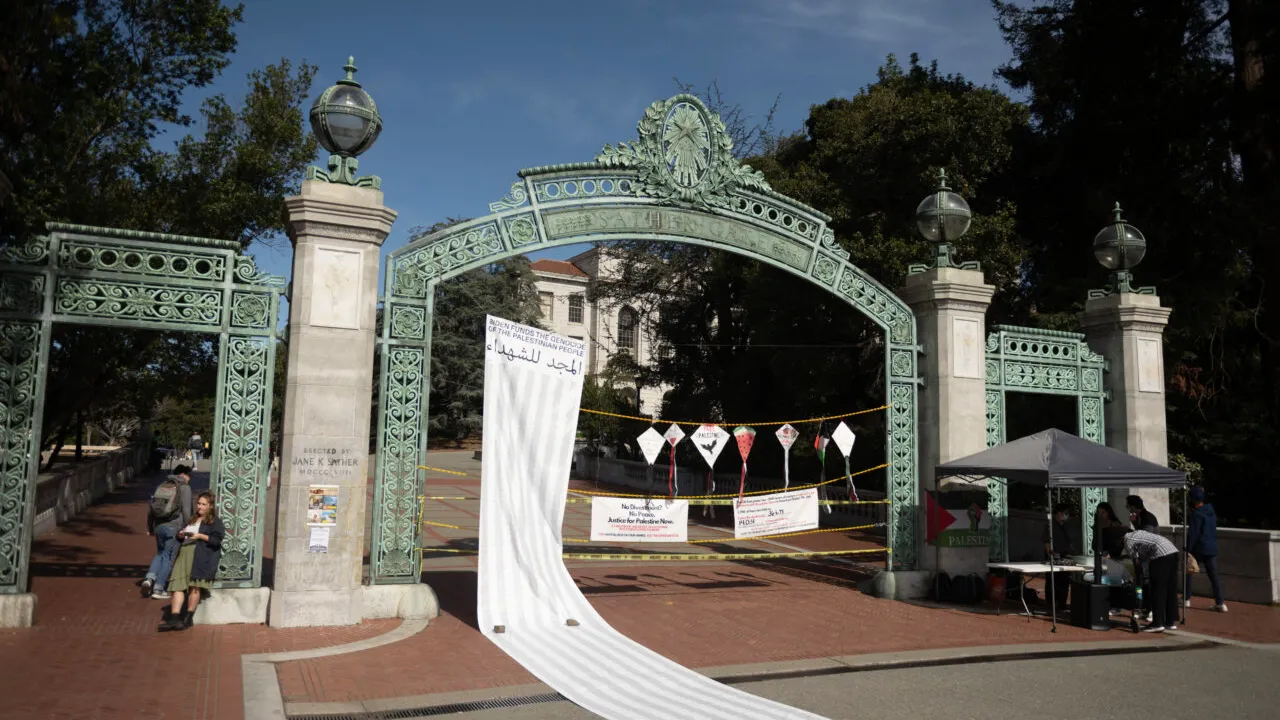
The end of the American exception?
European audiences might be surprised to learn how much odious speech has been spouted on the UC-Berkeley campus absent legal sanction. This is, of course, due to the mixed blessing of the First Amendment, which shields Americans from the frivolous libel suits often seen in the European courts but also permits the most vitriolic forms of racism and antisemitism to be aired in public. Americans have prided themselves on the country’s unequalled speech protections, even though free speech here is not free as it might appear–many forms of expression allowed under law are often punished by employers, professional associations, and other civil society institutions. No other provision of the American Constitution is more cherished than the First Amendment (with the possible exception of the Second Amendment, which vouchsafes the right to bear arms). In the United States, the argument goes, we do not need the hate speech laws found in Europe-the New World is not saddled with the baleful legacy of the Holocaust. This idea loses some of its attraction when one contemplates that the most hateful forms of speech lead directly into physical violence. The United States has been seeing more episodes in which this phenomenon is on view, from the Pittsburgh massacre of Jews to the white supremacist march in Charlottesville. For this author, the First Amendment does remain sacrosanct–the notion of police departments and courts deciding what sort of signs one can hold at a protest offends me on a visceral level. But Americans can no longer feel the same hauteur we used to with respect to Europe and its hate speech laws.
As the first mass protests erupted on campus in late October, I sent this message to a mentor. “This demonstration is a flawless embodiment of the Jewish condition. A tiny, besieged group stands with the flimsiest police ‘protection’ as genocidal maniacs accuse us of being genocidaires; most onlookers continue on their way,” I wrote breathlessly from the sidelines of the counter-protest. “This is my generation’s burden, I believe, to resign ourselves to the fact that the American post-war era was an interlude in which Jewish existence was uncontested. Judaism has become once again a crown of thorns.”
I still hold to the basic assertion: American Jewry’s insouciant exemption from one of the leitmotifs of Jewish existence–persecution and exclusion–has been definitively rescinded. Prominent commentators agree-The Atlantic just ran a cover story titled “The Golden Age of American Jewry” is ending. In response to the growing hostility to Jews at Ivy League universities, the chief executive officer of the Conference of Major American Jewish Organizations has ruminated about the precedent of prewar American Jewry’s founding of parallel institutions, like Brandeis University and New York’s Mount Sinai Hospital. Secession or expulsion from mainstream society is not out of the question: the phenomenon can already be discerned on a micro-scale here on campus. Many Jewish students at UC-Berkeley have become effective recluses at Hillel. I have sometimes felt so exhausted explaining to non-Jews that antisemitism is a foe of a thousand faces–and that now often comes in the guise of anti-Zionism–that I, too, have retreated into Jewish spaces.
In another time, another American Jew–far more eminent than this one–coined the term “the lonely man of faith.” Joseph Soloveitchik, American Modern Orthodoxy’s greatest theologian, meant to capture the Jew’s isolation in reconciling the material and spiritual aspects of his being. I intend something more concrete in appropriating this phrase: the widening chasm between American Jews and our neighbors on account of antisemitism. I am lonely. And so are we all.
Daniel Solomon
Daniel J. Solomon is a History PhD student at the University of Caliornia-Berkeley. Follow him on Twitter @DanielJSolomon.
